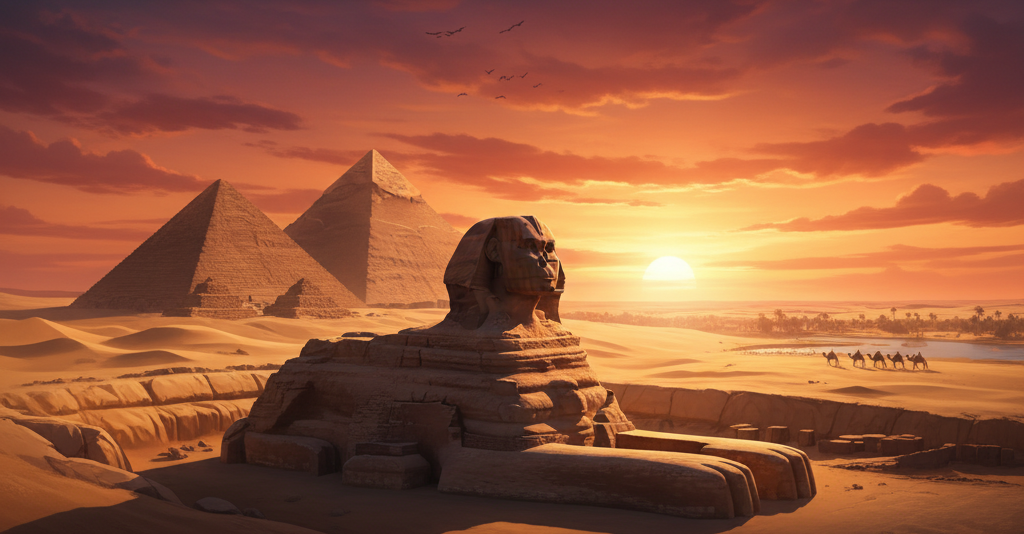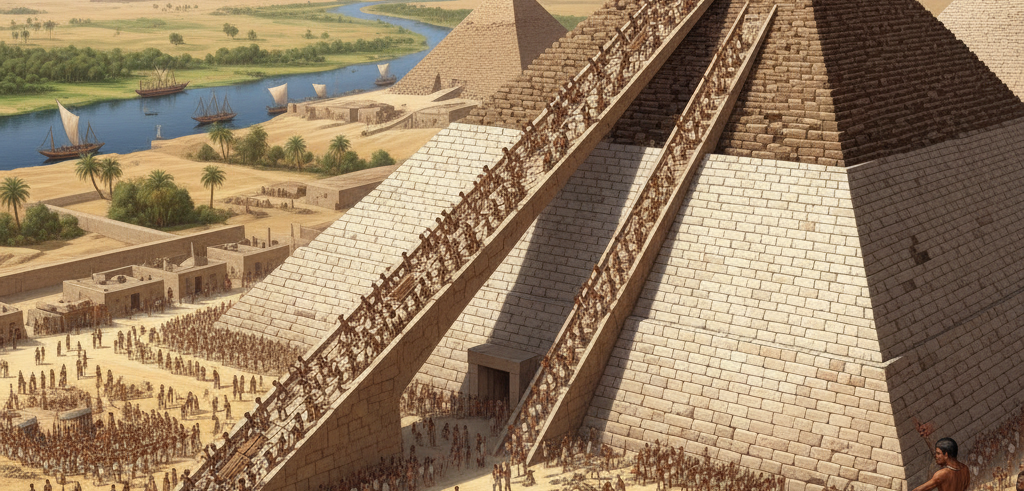The Pyramids of Giza, standing sentinel on the Giza Plateau near Cairo, Egypt, are among the most enduring symbols of human achievement and mystery. Built over 4,500 years ago during the Old Kingdom period, these monumental structures blend awe-inspiring history with the stark geography of the Nile Valley. As the last remaining of the Seven Wonders of the Ancient World, they continue to intrigue archaeologists, historians, and travelers, representing the pinnacle of ancient Egyptian engineering and religious beliefs.

Historical Construction and Purpose
The pyramids were constructed primarily as tombs for pharaohs, embodying their quest for immortality. The largest, the Great Pyramid of Khufu (Cheops), was built around 2580–2560 BCE and originally stood at 146.6 meters tall. Commissioned by Pharaoh Khufu of the Fourth Dynasty, it was part of a vast complex including smaller pyramids for queens, temples, and the enigmatic Sphinx—a lion-bodied guardian with a human head, possibly depicting Khafre, Khufu’s successor.
Construction involved an estimated 2.3 million limestone blocks, each weighing up to 15 tons, quarried from nearby sites and transported via the Nile River. Theories suggest ramps, levers, and a workforce of skilled laborers—contrary to myths of slave labor—completed the task in about 20 years. The pyramids’ alignment with cardinal points and stars like Orion’s Belt reflects advanced astronomical knowledge, tied to the Egyptians’ belief in the afterlife and the pharaoh’s divine journey.
Geographical Context and Environmental Adaptation
Geographically, the Giza Plateau’s location on the edge of the Sahara Desert and along the fertile Nile floodplain was no accident:
- Desert Plateau: Elevated above flood levels, the site provided stable bedrock for massive structures while offering panoramic views over the life-giving Nile, symbolizing the divide between the living world and the eternal desert.
- Nile River Influence: The river facilitated material transport during annual floods, and its delta created a microclimate that preserved the pyramids through millennia of arid conditions.
- Subterranean Features: Underground chambers and the nearby Nile aquifer hint at water management systems, possibly used in construction or rituals.
This strategic placement not only ensured longevity but also integrated the pyramids into the broader landscape of ancient Memphis, the capital city, fostering trade and cultural exchanges along the river.

Mysteries, Discoveries, and Cultural Impact
Historically, the pyramids have sparked endless debates: hidden chambers, the purpose of air shafts, and even extraterrestrial theories. Recent discoveries using muon tomography have revealed voids within the Great Pyramid, suggesting undiscovered spaces. The site was looted in antiquity, but artifacts like the Khufu ship—a solar barge for the afterlife—provide glimpses into funerary practices.
Culturally, the pyramids influenced later civilizations, from Greek historians like Herodotus to modern Egyptology. They symbolize pharaonic power and the sophistication of a society that pioneered mathematics, medicine, and architecture. As a UNESCO World Heritage site, Giza attracts millions, though challenges like urban encroachment and climate change threaten preservation.
The Pyramids in Contemporary Perspective
Today, the Pyramids of Giza serve as a bridge between ancient history and modern geography, illustrating how the Nile’s ecosystem sustained one of history’s greatest empires. Virtual reality tours and ongoing excavations keep the site alive for global audiences. For those interested in history and geography, visiting during the cooler months offers a chance to ponder humanity’s oldest architectural feats against the timeless desert backdrop.
